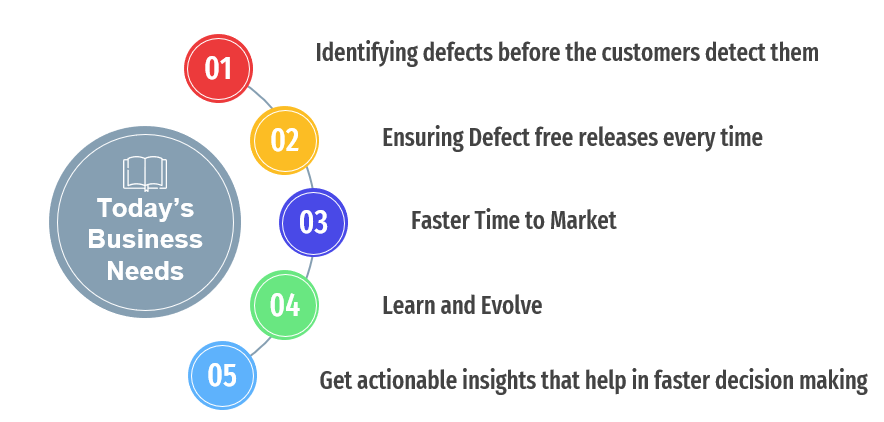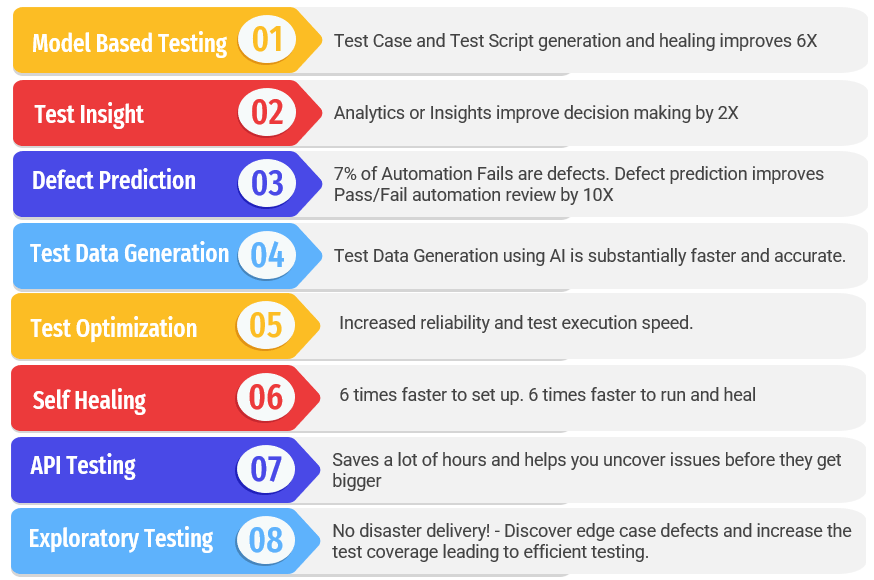Over the years, application or software testing has become an integrated and continuous process of SLDC rather than being a standalone activity that is done at the end of the SLDC. C The software testing has evolved from exploratory and manual testing to continuous testing with the help of automation.
While automation testing has reduced the time spent on testing significantly, it is associated with some problems. So, without any further ado, let us understand what test automation is in detail followed by the issues that it has and a reliable solution that we can go for.
What Is Test Automation?
Test automation takes a set of software testing activities and executes them via an automation tool or framework. The tool will run a set of tasks in a properly defined pattern.
It aims at increasing the efficiency of testing by removing any scope for human errors, saving time, and improving test coverage.
It is an undeniable fact that manual testing is a time-consuming and cumbersome process. Test automation can help in generating thousands of test cases within a very short time without causing tester fatigue. With ever evolving technology, test automation is a must have in 2023.
Test Automation Challenges
While automated testing is a great way to reduce efforts and increase efficiency, it comes with some challenges.
- Upfront Investment: You need to analyze, design, and set up a framework for test automation, and it comes at a cost. The initial licensing, development, and operational costs can pose another huge burden.
- Test Case Prioritization: With very short release cycles, there is very limited time for testing, test cases have to be prioritized based on multiple parameters. This prioritization is tough because one needs to focus on the quality of the test case, save time, and shouldn’t compromise at any point.
- Lack of Scripting Expertise: The QA team should be familiar with multiple programming languages in order to generate test cases which is a time-consuming process.
- Emulating Real-World Scenarios: For comprehensive testing it is important to consider the real world scenarios. Covering all the possible situations is difficult and time consuming.
- Device Fragmentation: This is the biggest challenge faced by any testing team. They need to check whether the application is compatible with different OS and versions but the process isn’t that easy to do.
Test Case Maintenance: Maintaining the test cases is very important, and updating them from time to time as per the changes requires effort. This perhaps, is the biggest challenge because as per Webomates’ study creating test automation is just 20% of the effort, while 80% lies with the maintenance. Figuring out how to maintain these test cases is a hurdle for so many testers, but there is a solution.
Self Healing Test Automation
Self healing test automation is a technique of leveraging both artificial intelligence and machine learning to adapt application testing dynamically for any changes in the application interface or development environment. Some of its benefits are:
Looking for Faster Releases? See how Webomates’ AiHealing can help!
Self healing helps in maintaining the test automation process in a proper way however, infusing AI in test automation can make the self healing process efficient and faster. As mentioned earlier, test case maintenance can take up 80% of a team’s time. Self healing processes enhanced with AI can help you automate your entire testing process without stressing yourself about its maintenance. Webomates’ patented AiHealing technology, takes the load of test case maintenance off your shoulders. Let’s see how it does that in the next section. Read for more about this blog : Test automation




.jpeg)
